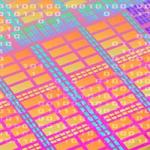
Research Topics
Cryo-electron microscopy
My group develops algorithms to improve the subjective data quality assessment criteria often used during data acquisition by providing a computational platform for rapid image analysis and generation of unsupervised statistics to inform data collection in real-time and improve the image quality. We design algorithms that make unsupervised decisions about how to collect the data and create ‘intelligent’ microscopes via direct feedback between analysis and instrument.
Graphene-liquid-cell electron microscopy
My group develops algorithms for atomic-resolution structure identification of nanocrystals. The analysis of time-series data of nanocrystals imaged in solution to obtain 3D structural information is an emerging field of research with great potential for improving our understanding of the physiochemical properties of nanocrystals, which thermodynamically deviate from the expectations derived from the bulk material.
Despite incredible progress, atomic, biomolecular and cellular-based imaging technologies are typically utilized by research groups in relative isolation and thus are yet to generally reach their full potential. My group develops computational tools for integrating and visualizing data linking information across biological/chemical scales and different imaging modalities. This allows the translation of structure into function at the cellular and organism levels, which could lead to conceptual advances in a range of biological research fields.
Biography
Hans started his scientific career using a 300,000-volt helium-cooled electron microscope (EM) to image biological molecules operating as “machines” inside cells. He quickly realized that available computational methods were limiting progress and started to write his own specialized computer code to transform 2D EM images into 3D structures of biomolecules.
As a postdoctoral fellow at Stanford University, his theoretical work grew into the first version of the open-source program package SIMPLE. In 2014 he established his independent group at the Biomedicine Discovery Institute, Monash University, Australia. At Monash, he developed game-changing new technologies for 3D structure determination and time-series analysis of movies obtained with aberration-corrected transmission electron microscopy of individual nanoparticles tumbling in solution and developed algorithms allowing 3D reconstruction of biomolecules at near-atomic resolution in a matter of hours, using standard desktop computers.
Hans’ vision is to develop software that has the potential to accelerate discovery across multiple disciplines and make a significant impact on biomedical research world-wide. The tools available in the SIMPLE/SINGLE software packages that he created and leads the development of will facilitate drug development and allow characterization of the atomic structure of catalytic nanoparticles.
Related Scientific Focus Areas
This page was last updated on Monday, September 30, 2024

